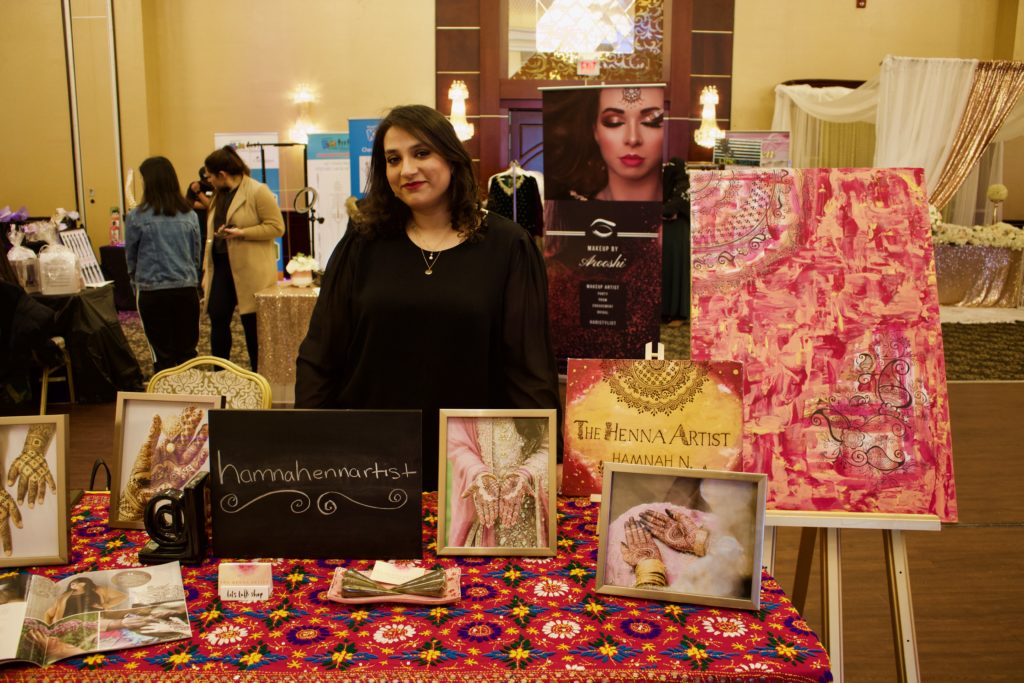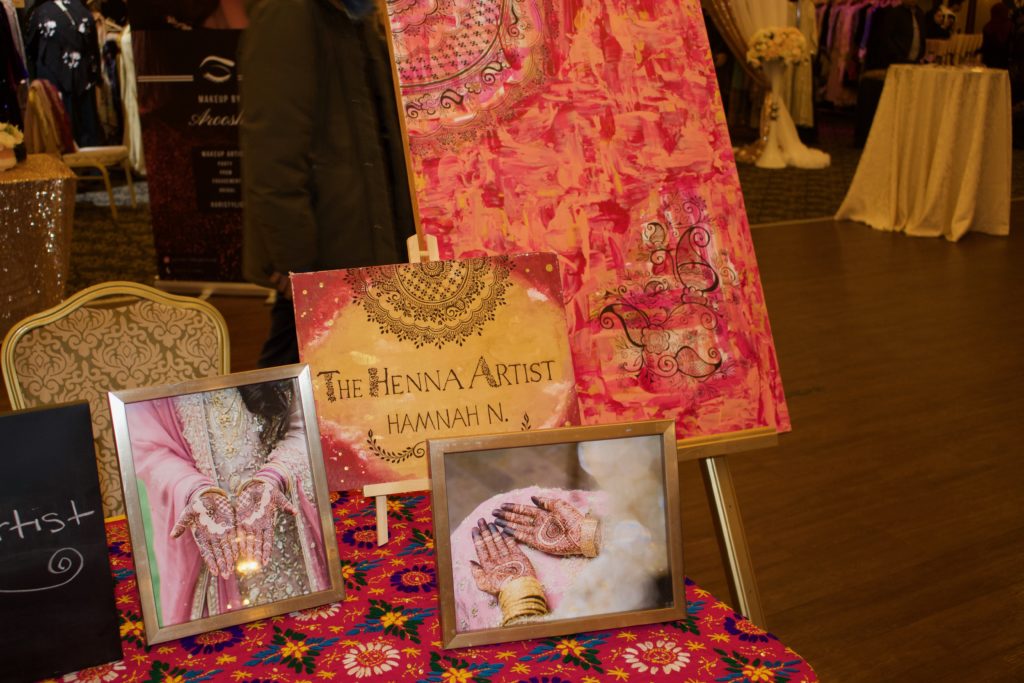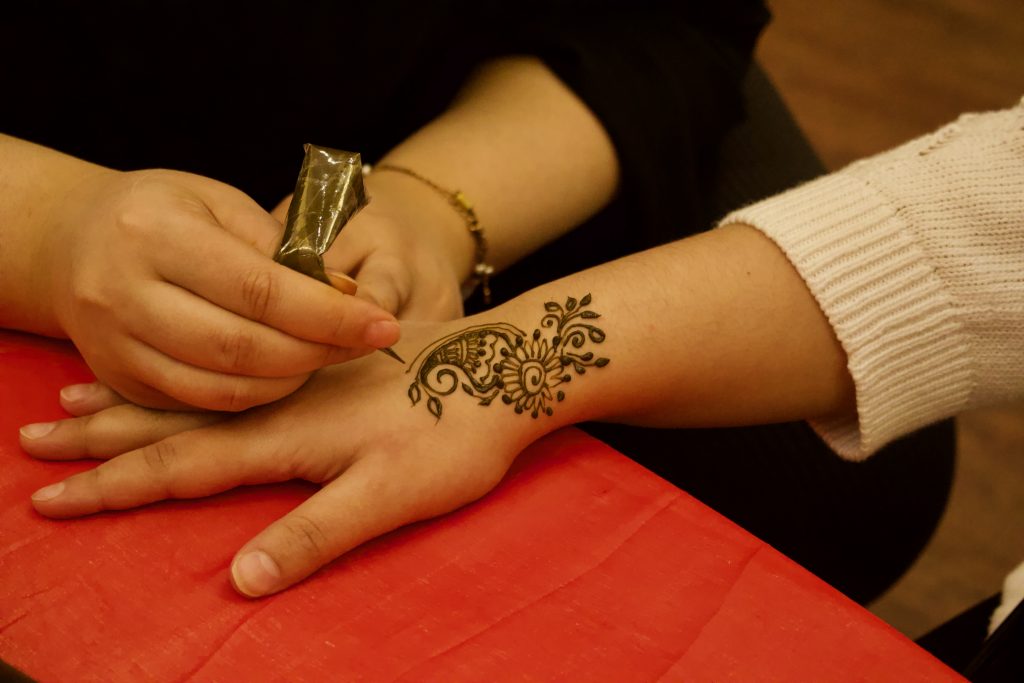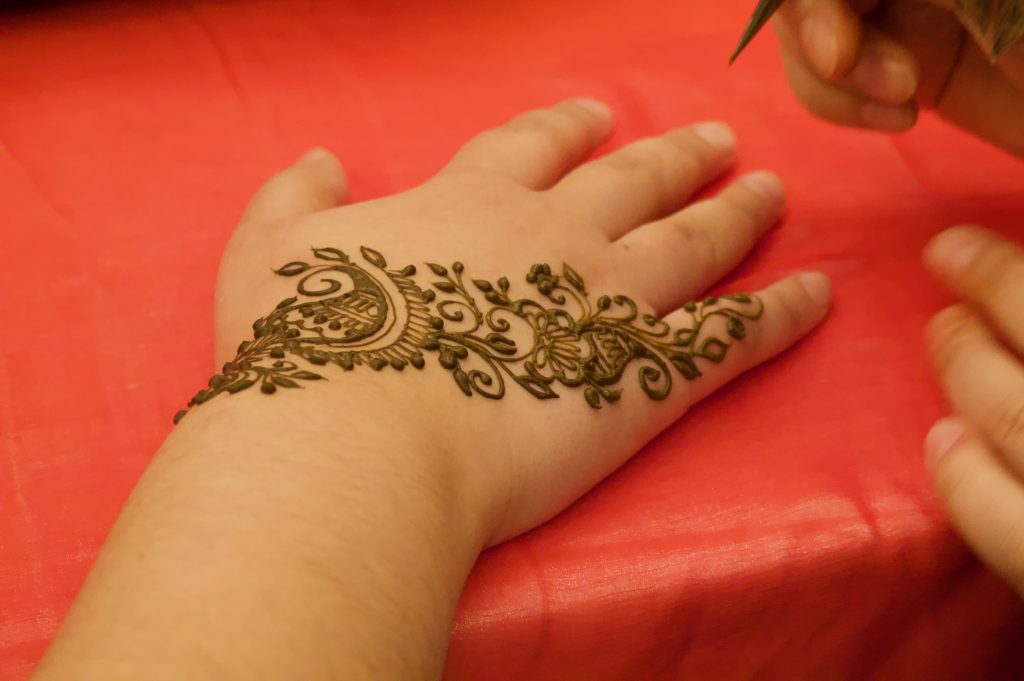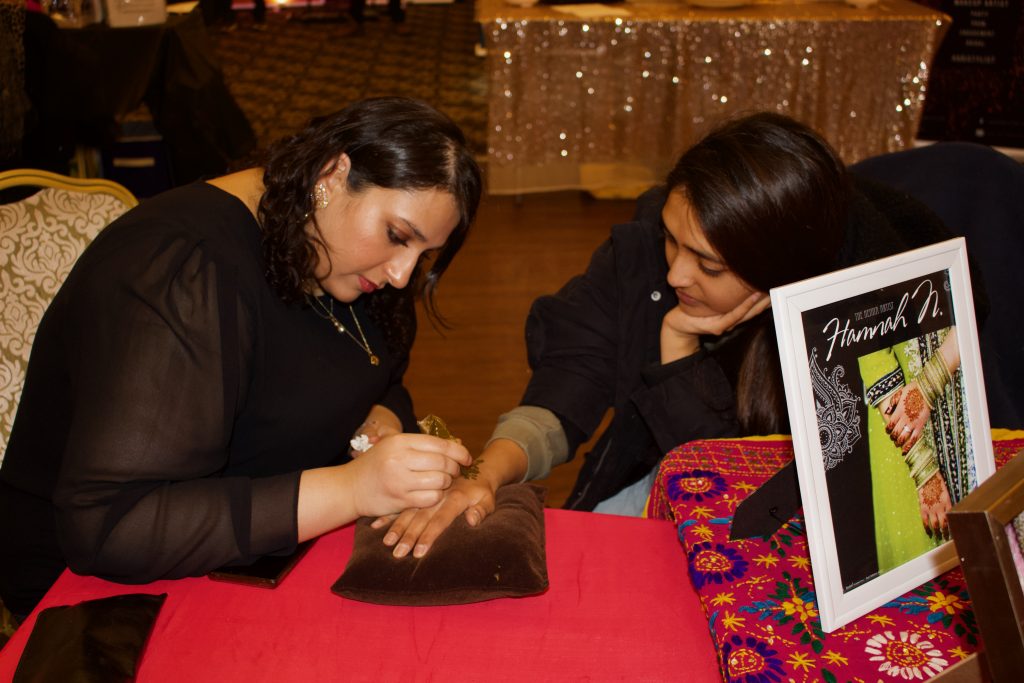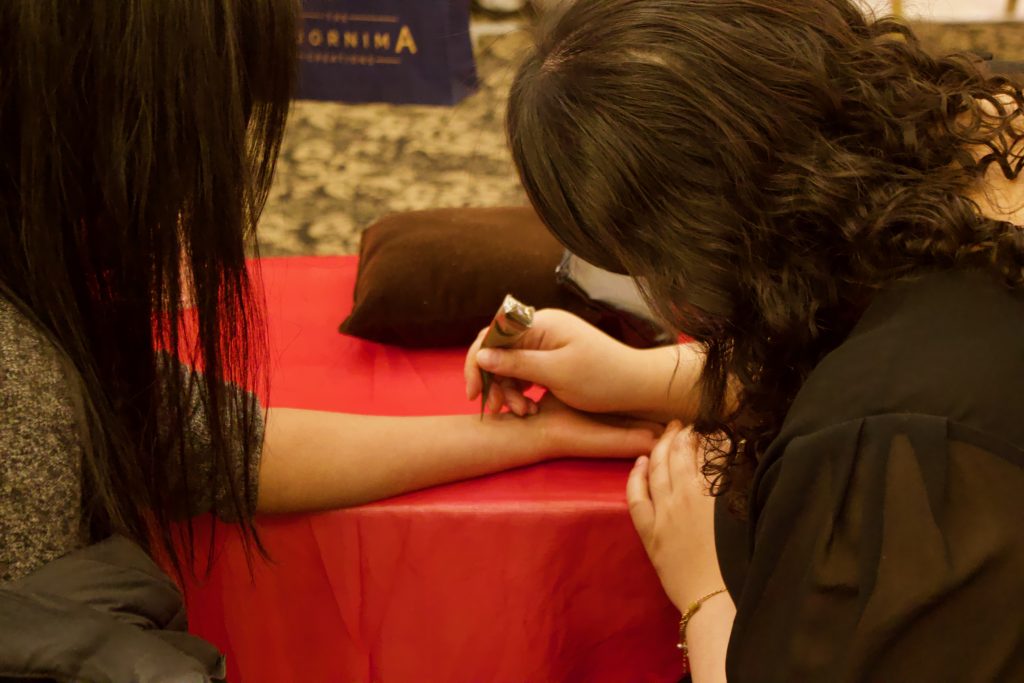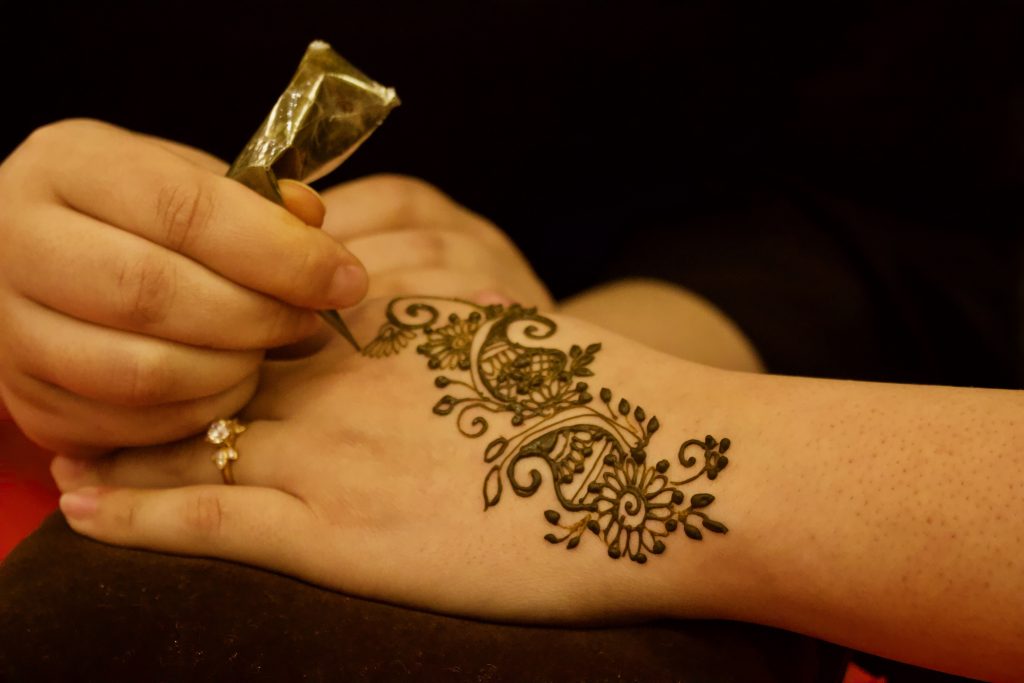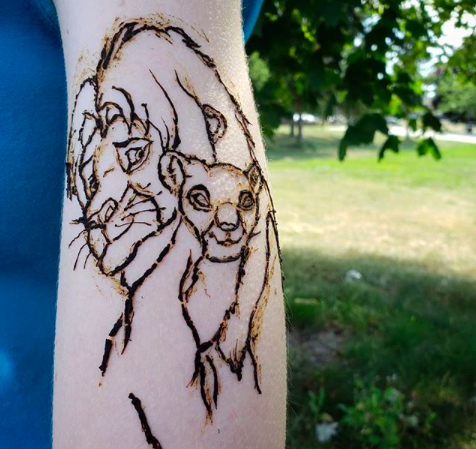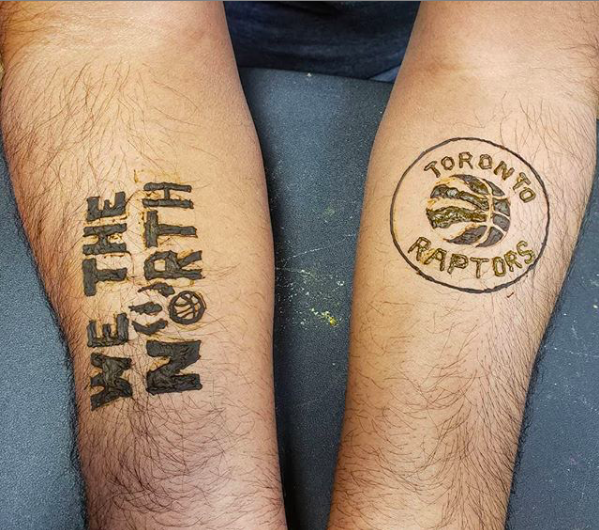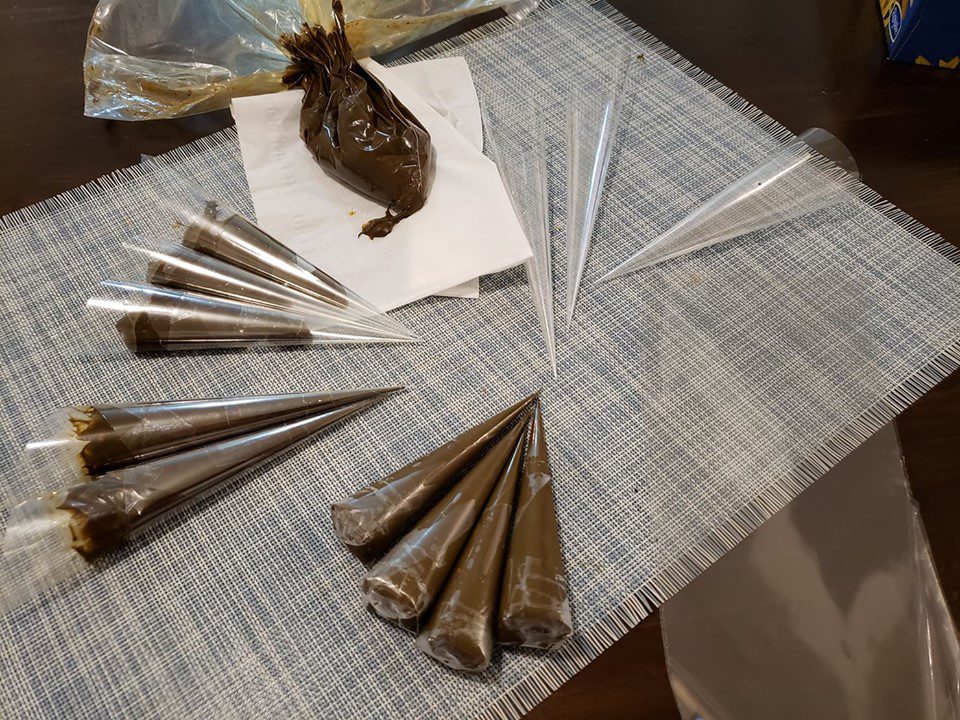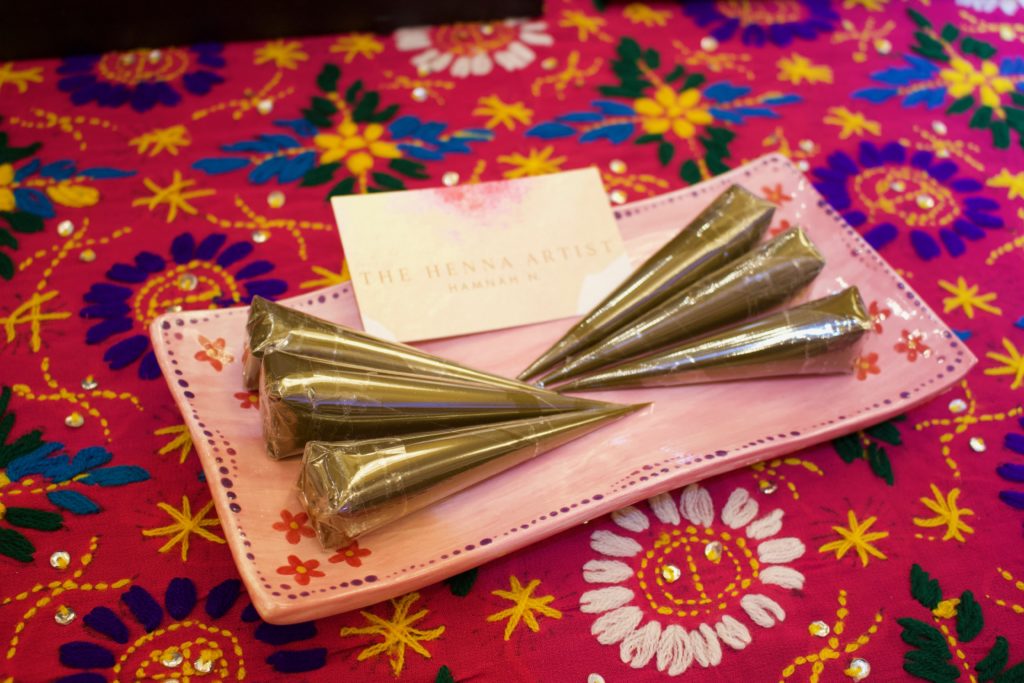By Petra Calder
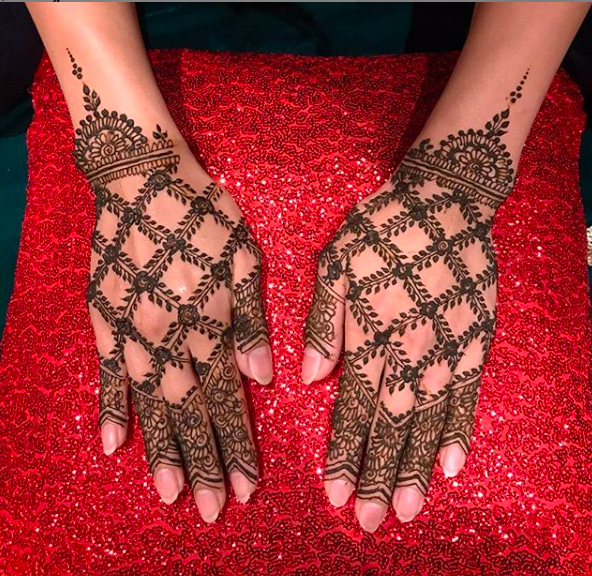
Henna designs by Hamnah Nabeel.
(Hamnah Nabeel/Hamnahennartist)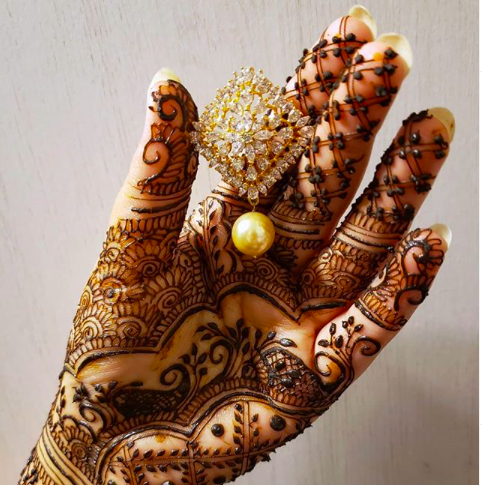
Henna designs by Hamnah Nabeel.
(Hamnah Nabeel/Hamnahennartist)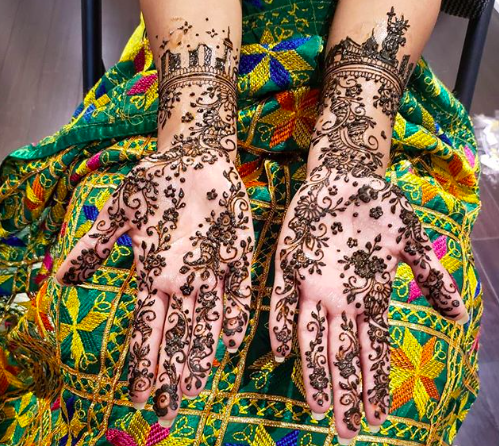
Henna designs by Hamnah Nabeel.
(Hamnah Nabeel/Hamnahennartist)
A stream of sparks shot up into the room, a throbbing beat began playing on surround speakers and a crowd of glittering dresses ran past me. This was the Milan South Asian wedding show at the Markham Convention Centre, and the catwalk had just begun.
Beside the sparklers and makeshift stage were rows of vendors displaying businesses ranging from wedding planners to food caterers to even chiropractors.
As I continued to be distracted by the twirling models, ear-splitting music and flashy booths, I remembered I wasn’t here as a bride for the fashion show but instead here for Hamnah Nabeel, or as her display canvas read: Hamnah N. The Henna Artist.
Brides, teens, mothers and looming husbands continuously wandered up to Hamnah’s colourful booth to pick up a business card and linger around to watch her gracefully apply henna to a guest’s hand. They watched and waited as flowers, swirls, vines, stars, loops and dots were gilded on with ease as Hamnah chatted away with guests as she embellished their hands.
An event like this is nothing unusual for Hamnah. While she’s been in the business professionally for eight years, she’s been designing henna for over 15, beginning when she was a child as she learned it through her Pakistani heritage.
Some days Hamnah will stay at events like this until 2 a.m., creating designs that can take up to eight hours to finish. “It takes me five to 10 minutes to do a simple hand design. When I first started, it could take me from 30 to 40 minutes. My very first client I did about 10 designs in five hours, now I can do that in about an hour and a half,” she stated.
Even though Hamnah grew up designing henna, she fell into this job by mistake. “I knew that I did not want to turn it into a business. It was a hobby, for fun, it was where I went to unwind. It was therapeutic, I did not want anything to do with that and work. I was becoming an accountant!”
However, her sister was a photographer at an event that had their henna artist cancel last minute. Hamnah reluctantly took over the role for the night and ended up loving the clients and the job. From that point on, her business began to snowball, slowly booking events and picking up new clients each month. After working part-time for a hair salon as well as working alongside another henna artist, she was eventually able to quit both and become a full-time independent henna artist.
Eight years have passed since then and her business has allowed her to travel across Canada to work at festivals, weddings, birthday parties, girls night outs, and at in-store boutique events. She has even worked with larger companies including United Way, Smile Canada and The Bay, where she was hired to give henna designs to attendees at a holiday gala.
While the events and weddings are a crucial part of her business and income, one-on-one appointments often fill up her work week and offer unique customer and design experiences for Hamnah.
“Everyone’s different, you meet so many people and everyone has their own story to tell. Some people like to just sit there, get their henna done and take in the experience, some people like to vent. Brides are fun, you can get a range of emotions, I’ve seen so many different situations,” she said.
Uroosa Sohail is a recent customer of Hamnah’s and says getting her henna done was a truly wonderful experience. “Her work speaks for itself. She’s skilled, fast and a really fun company. In the past, I had to sit through long, awkward silence while getting my henna done but with Hamnah, I felt right at home and she went above and beyond to make sure I was happy with the end results.”
To Hamnah, each client is a clean slate. She asks every customer if they have any pictures or inspiration and asks where they want the design on their body, then she dives right in, creating a design completely free handed.
Her handiwork doesn’t stop just at traditional henna. Clients continuously come in asking her to draw practice tattoos, quotes, skylines and designs to cover surgery scars and stretch marks. Recently a client got her to draw Lion King characters in henna across their arm. Even during the NBA championship season, many customers asked for the Toronto Raptors logo, which she was even asked to work into a bridal design.
One of the most unique services Hamnah offers is for cancer patients who have lost their hair due to chemotherapy. It’s a free service she offers in which a patient can receive a henna design in the style of a crown on their head. “It’s just something to help them cope with what they’re going through… I’ve had people come to me that are either going through some type of disease, cancer, or even mental illnesses,” she explained.
“I had one lady come and she wanted a little thought bubble type of thing that was exploding and she had the words ‘it’s just a thought’ written in it. She was battling depression and anxiety and it was just a reminder for herself on her forearm for when a thought is coming into her head that shouldn’t be there, she wants to visualize that thought exploding.”
While at the wedding show, I watched her continuously draw on guests and became transfixed by her quick hand movements and flowing designs. During a lull in interested customers, Hamnah let me sit down for a small sample design. After a quick henna application I was shocked at the cool sensation the henna created on my arm. Hamnah explained that henna has been traditionally used for centuries as a cooling agent on top of skin in countries where the climate runs high.
Not only did the sensation of henna come as a shock to me but so did the relaxing aroma of the henna. She explained that what I was smelling was lavender and eucalyptus essential oils.
“There’s no chemicals in my henna, it’s all natural,” she stated, highlighting how that’s one of her biggest competitive advantages. Her henna is entirely hand-made at home using ingredients such as lemon juice, water, regular tea bags, clove, fine sugar, henna and essential oils. Her special recipe took her almost two years to perfect. “I know what I’m doing and I know what’s going in it, I can be confident when I tell somebody these are the ingredients.”
Michele Moorhouse, an artist and creator of the Art Henna Connective, a henna education site, confirmed that henna has been used within hundreds of cultures for body decoration, cosmetic application, historical celebrations, cultural weddings and even as a cooling agent. Recipes for body art often include sugar, tea or lemon to allow the paste to last longer. She stated Henna has been used cosmetically for centuries, with ambiguous historical connections tied to dozens of countries including India, Egypt, Ukraine, China and Syria.
Hamnah pulls inspiration for her henna designs from virtually anything around her, including nature, literature, quotes, movies and astronomy. She pulled out her sketchbook for me and began flipping through pages and pages of loops, swirls and dots in hundreds of shapes and sizes. “I will sit there and just draw flowers. It’s doodling but with purpose.” She explained how continuous practice of the same designs helps her become more efficient, consistent and precise when applying henna.
Despite her obvious henna talent, Hamnah finds solace through other artistic outlets including painting, drawing and writing, which she practises on a regular basis. One day she plans on combining her creative mediums and opening up a business much larger than only henna designs. “Eventually I don’t want to be just a henna artist. Not to demean myself, but I want to be an artist, and be known as an artist.”

